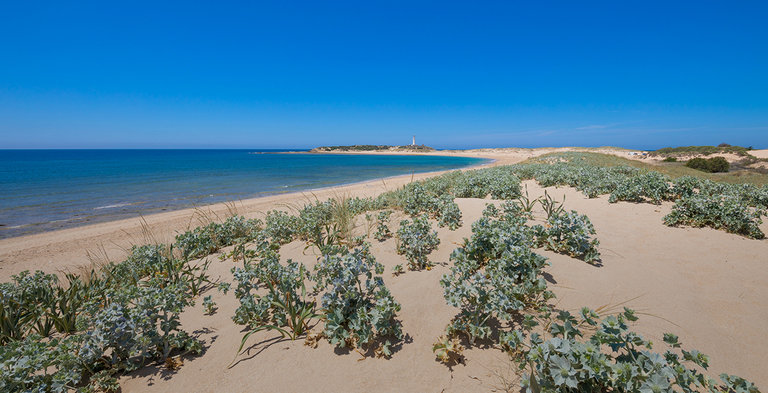Food-inspired cosmetics have flood the market for several years now. Grapeseed oil, coconut milk, cacao butter, wheat extracts, berries extracts and other superfood charged in minerals and vitamins have popped up in all cosmetic categories. These ingredients have known such a craze because they reassure the consumers: they sound familiar, healthy as the food consumers eat, and make cosmetics more natural. With the continuous seek of healthier lifestyle, the food-inspired beauty seems to have some days ahead. Let's discover a new wave of original & remarkable food-inspired ingredients full of healthy, but also sustainable promises.
THE VEGETABLES OF THE FUTURE
In the late 20th century, one observation was made: our food became less diverse and less healthy than the food of our ancestors1. The loss of diversity of cereals and vegetables available to consumers was identified as a source of impoverishment of our food and considered one of today’s most serious environmental concerns by the Food and Agriculture Organization2. A quest for rediscovering old vegetables, fallen out of favor, was then initiated and led to the reintroduction into cultivation of forgotten species.
At the same period, concerns rose about the resistance of plant cultures facing more and more difficult climate conditions like dryness in hot environments or floodings in coastal areas3.
One plant category then stepped out and seemed to be the ideal candidate for diversifying our food and being more resistant to stressful culture conditions: the halophytic plants. “Halophytic” is a category of plants able to survive in a saline environment like coastal areas exposed to seawater. This category of plants were then considered like the vegetables of the future.
WHO ARE THEY? AND WHERE TO SOURCE THEM?

All halophytic plants are not edible. However, if we look at historical sources, we can identify several plants known for their traditional (sometimes forgotten) food usage4. We find several plants with high potential like the Buck's-horn plantain, the Sea Fennel, the Sea Holly, the Spiny chicory, the Pepperwort etc. Many of these plants are Eurasian plants found commonly in Europe (Western as well as Eastern and Southern Europe) and on the Mediterranean rim.
In France, Brittany is an important territory for agriculture and is even the leading region for the production of vegetables5. With its numerous coastal areas exposed to seawater, it is an ideal incubator for halophytic plant cultivation and diversification of the crops. Thanks to the potential of this territory, our Breton subsidiary, Biotech Marine, could unveil the power of these “seaside vegetables of the future” for cosmetic applications. Five vegetables are now part of our offer for remarkable food-inspired cosmetics.
1. SEA KALE, THE HIGH VALUED DELICACY
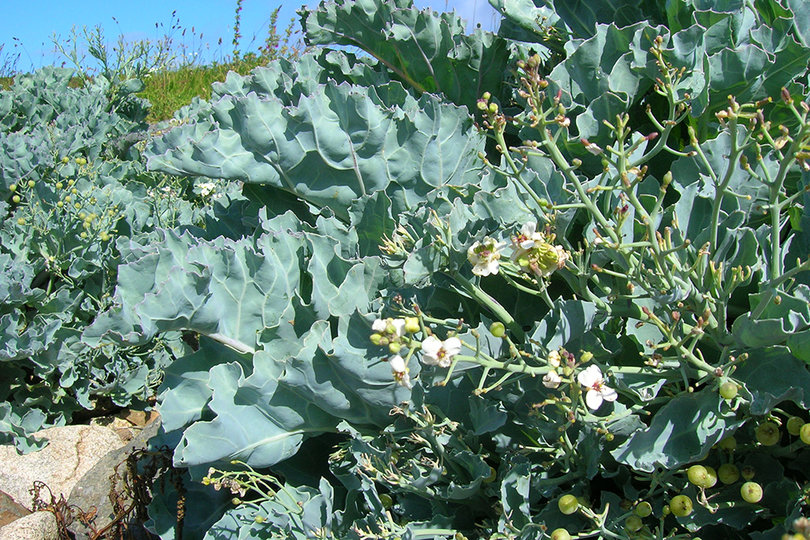
The Sea Kale (Crambe maritima) can be the most familiar of our portfolio, as his cousin is the cabbage or the kale. This plant was already cultivated in ancient Rome and Greece and was mentioned by Pliny the Elder6. He referred to the plant as an anti-scurvy remedy for sailors. In the 17th, 18th and 19th centuries, it was highly valued in Europe and was considered a delicacy. There was a general fashion for its cultivation in the gardens of the upper social classes7. The Sea Kale was cultivated by example in the gardens of Versailles8. In England, the Sea Kale was "in very general use" as a vegetable, according to the popular cookbook “Mrs Beeton's Book of Household Management”9, in which it is called a type of asparagus. Unfortunately, wild stocks were severely reduced in Britain by forcing in situ and collecting for food until the practice was banned in the early 20th century. The Sea kale fell out of favour10. In France, it became a protected species11 12 13 . Considered like a high potential vegetable, the Sea Kale was promoted and reintroduced into cultivation in Great Britain and Northern France at the end of the 20th century14 15. In the early 21st century, chefs made it fashionable again16.
DISCOVER OUR SEA KALE EXTRACTS
Two extracts of Sea Kale are available for skin & hair benefits. BLUE SEAKALE SC is an antioxidant oil-soluble extract demonstrating soothing properties (-43% skin reactivity after a 28 days study), cell protection benefits for slowing down aging processes (cell renewal & youthfulness potential protection) and skin barrier reinforcement effects (ceramide II booster). The second extract, BLUE SEAKALE HC is an antioxidant water-soluble extract demonstrating hair benefits like shine and softness and skin protection effects.
2. SEA BEET, THE ANCESTOR AND THE GUARDIAN OF THE BEET FAMILY
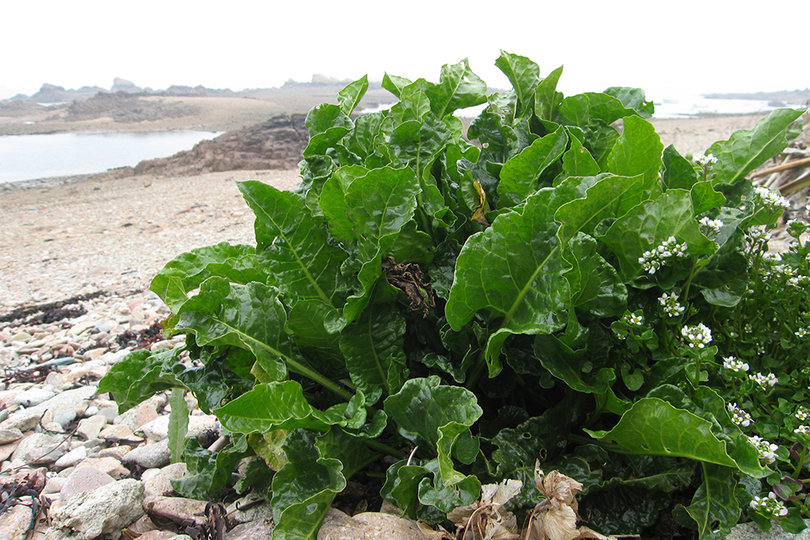
The Sea Beet (Beta maritima), also called the Wild Spinach, also has very ancient references. The leaves of the wild beet have been eaten as a vegetable since prehistoric times, as evidenced by neolithic finds. Cultivation probably began as early as the second millennium BC in the Near & Middle East. Several cultivated forms started to appear and gave birth to new species with new genetic traits over the centuries. Inside this big family of descents, we find the sugar beet, the field beet, the beetroot, the chard and many more. Nowadays, the genetic resource of the Sea Beet is considered precious, containing more resistance genes (to stressful conditions like challenging climate conditions or biological stress) and is used for breeding of sugar beet or other cultivated forms so that their cultivations become less vulnerable to aggressions17.
DISCOVER OUR WILD SPINACH EXTRACT
SEA SATIN™ is an antioxidant oil-soluble extract demonstrating natural conditioning benefits for hair (+22% shine satisfaction, +14% volume satisfaction, 28 days study). It can also be used for soothing skin and protects it against oxidative stress.
3. GOLDEN SAMPHIRE, THE TONIC REMEDY
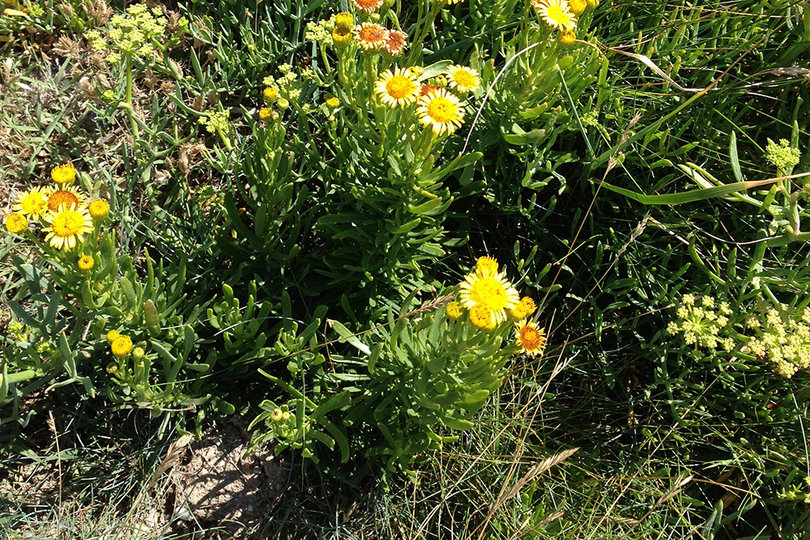
The Golden Samphire (Inula crithmoides) is a plant for which less information is available. Native to Western Europe and the Mediterranean region, the young shoots, leaves and flower buds of this plant are edible (the so-called ‘ħażura’). Throughout Europe, it used to be pickled or cooked, most often used as a relish. The roots of this plant have also been used by Lebanese folk as a tonic18. In this country, where the plant is common, it was identified quite early as a good candidate for saline culture19.
DISCOVER OUR GOLDEN SAMPHIRE EXTRACT
INULA HC is an oil-soluble extract of the Golden Samphire demonstrating strong antioxidant properties. Its further properties make it adapted to dry hair & skin conditions like it is observed on seniors. Hair lipidic replenishment (+73% total lipids and + 87% polar lipids tested on keratinocyte cell cultures), energizing properties for a better renewal balance and prevention of metabolism slow-down are the key features. It also shows benefits for hair fibers: shine, softness and enhancement of color uptake (tested in a colouring shampoo) were observed on hair tresses.
4. SEA FENNEL, THE FLAVORING “REFRESHING”PLANT
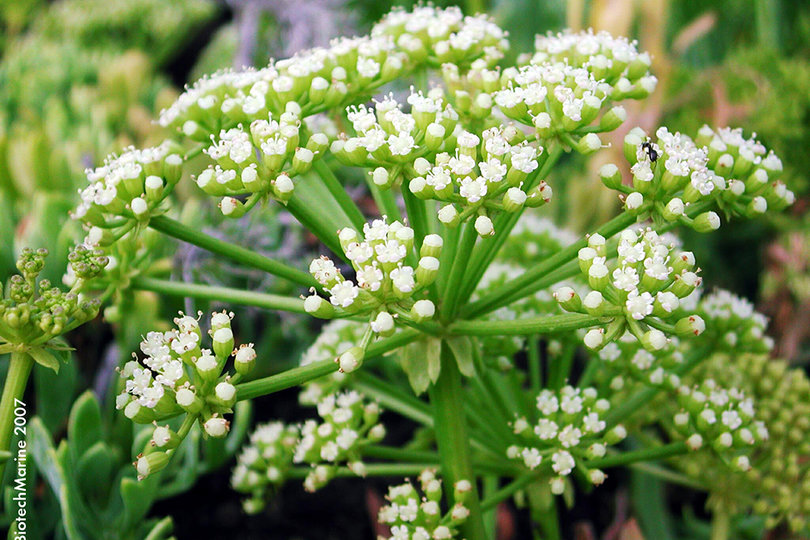
The Sea Fennel (Crithmum maritimum), also called sometimes Rock Samphire (be careful, it is a very different plant from the Golden Samphire) is a very aromatic vegetable described as having a slightly salty taste and some notes of celery, followed from light notes of common fennel and peel of green citrus with a pungency aftertaste. Sea fennel has existing culinary uses in many European countries. The leaves are washed, cut into small pieces and prepared for salads that are served with a dressing of mixed juice and olive oil. A new format of Sea Fennel powder used as spice-colorant has been investigated by Italian researchers to increase the sensory appeal of some traditional dishes and support the creation of new recipes20 21 22.
DISCOVER OUR SEA FENNEL EXTRACTS
NATIVE ESSENCE™, an oil-soluble extract of the Sea Fennel, provides radiance to the skin and protects it from air pollution. The skin barrier is reinforced (ceramide booster). We also offer another type of extract, CELTOSOME™ CRITHMUM MARITIMUM, coming from our sustainable CELTOSOME™ technology. This product is a pure concentrated powder of Sea Fennel stem cells. It is a complete anti-aging ingredient providing anti-wrinkle, firmness, lightening and radiance properties.
5. SEA HOLLY, A FORBIDDEN FRUIT
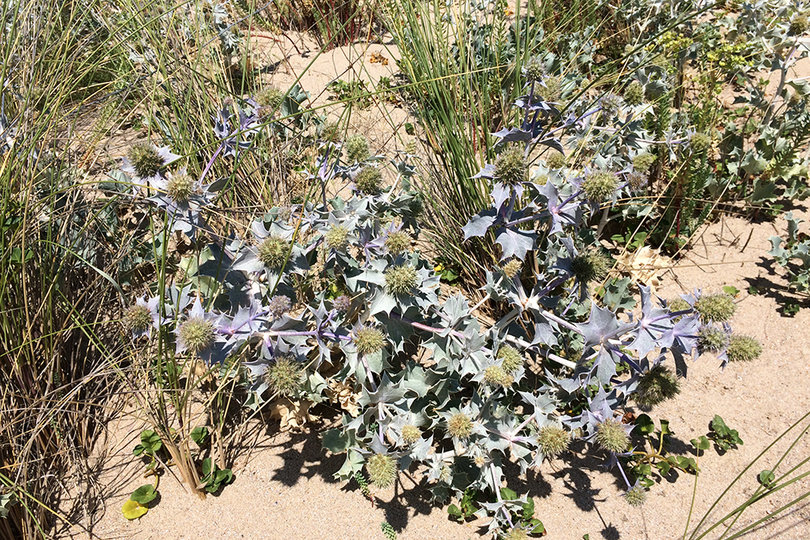
The Sea Holly (Eryngium maritimum) has a long tradition of consumption23. The fleshy roots were eaten cooked or candied. The roots have a sweet taste and aroma comparable to that of carrots, and after heat treatment to parsnips and chestnuts24. They were popular especially in England. Eryngium maritimum has been grown in gardens since mediaeval times, for example the gardens of the Westminster Abbey, in private gardens since at least 1525, and in botanical gardens, since c. 1683 in the Physic Garden of Edinburgh23. In Elizabethan times, it was even believed to be a strong aphrodisiac. It is named in a speech by Falstaff from Shakespeare25:
"Let the sky rain potatoes;
let it thunder to the tune of Green-sleeves,
hail kissing-comfits and snow eringoes [sea-holly],
let there come a tempest of provocation..."
In many coastal regions though, Sea Holly is one of the rarest and most threatened plant species and is therefore listed in Red Data Books (e.g. in Lithuania, Estonia, Norway, Israel, along the Russian Black Sea). Since the beginning of the 20th century, it has been threatened with local extinctions in some European countries and it has been protected by law23.
DISCOVER OUR SEA HOLLY EXTRACT
Our sustainable CELTOSOME™ technology, allows us offering an extract of this plant protected in so many areas. CELTOSOME™ ERYNGIUM MARITIMUM, is a pure concentrated powder of Sea Holly stem cells. It provides skin firmness and mosturization.
THE IDEAL SOLUTION FOR REMARKABLE NEW FOOD-INSPIRED COSMETICS
The concerns about crop diversity & sustainability have started to gain popularity among consumers. On the tables, "old" or even "forgotten" vegetables have reappeared. Driven by health concerns, consumers began rediscovering old local, traditional, healthy and considered authentic vegetables. Chefs and consumers make them fashionable again and more and more websites show how to use them26 27. Our quintet of seaside garden vegetables, the Sea Kale, the Wild Spinach, the Golden Samphire, the Samphire and the Sea Holly will align healthiness, sustainable & cosmetic benefit expectations of consumers.
(1) Khoury, C.K.; Bjorkman, A.D.; Dempewolf, H. & co. 2014, Increasing homogeneity in global food supplies and the implications for food security. PNAS. 111 (11) : 4001–4006.
(2) United Nations. World Summit on Sustainable Development. August 29, 2002
(3) Julian Siddle: Seawater holds key to future food (ang.). BBC News, 2008. [dostęp 2010-02-08].
(4) S.A. Petropoulosa, A. Karkanisa, N. Martinsb & co., 2018, Edible halophytes of the Mediterranean basin: Potential candidates for novel food products, Trends in Food Science & Technology 74: 69-84.
(5) Agreste Bretagne – Les cahiers régionaux – Juillet 2014 - 1
(6) Marian Nowiński: Dzieje upraw i roślin ogrodniczych. Warszawa: Państwowe Wydawnictwo Rolnicze i Leśne, 1977.
(7) Matthew Biggs, Jekka McVicar, Bob Flowerdew: Wielka księga warzyw, ziół i owoców. Warszawa: Dom Wydawniczy Bellona, 2007, s. 86–87. ISBN 83-11-10578-2.
(8) Notice historique sur le potager du Roi, à Versailles, par M. Le Roi Reliure, 1847
(9) Beeton, Isabella (1861). Mrs Beeton's Book of Household Management. London: S. O. Beeton. p. 1150.
(11) https://inpn.mnhn.fr/espece/cd_nom/92782/tab/statut
(12) P. Lacroix, J. Le Bail, 2006, Plan de conservation en faveur du choux marin en région Pays de la Loire (PDF)
(13) https://inpn.mnhn.fr/zone/znieff/530002117/tab/commentaires )
(14) Péron, J.Y. and Dubost, D., 1992, Revalorization of lost vegetables: a contribution to preservation of genetic resources, Acta Hortic. 318, 263-270 /
(15) A. Sanyal & G. Decocq, 2015, Biological Flora of the British Isles: Crambe maritima, Journal of Ecology, 103 769–788
(16) https://www.theguardian.com/lifeandstyle/allotment/2009/mar/02/blogpost
(17) Beta maritima, the origin of beets (Enrico Biancardi, Leonard W. Panella & Robert T. Lewellen, 2012)
(18) Environment and Resources Authority (Malta), BIOSNIPPET ISSUE 46 (PDF)
(19) Zurayk, R. A.; Baalbaki, R., 1996, Inula crithmoides: A candidate plant for saline agriculture, Arid Soil Research and Rehabilitation. 10 (3): 213–223.
(20) https://web.archive.org/web/20150123060800/http://www.gimcw.org/plants/Crithmum.maritimum.cfm
(21) M. Renna, M. Gonnella, 2012, The use of the sea fennel as a new spice-colorant in culinary preparations, Int. Journal of Gastronomy and Food Science, 1(2) 111-115
(22) M. Renna, 2018, Reviewing the Prospects of Sea Fennel (Crithmum maritimum L.) as Emerging Vegetable Crop, Plants 7(4): 92
(23) Maike Isermann and Paul Rooney, 2014, Biological Flora of the British Isles: Eryngium maritimum, Journal of Ecology, 102 789–821
(24) https://atlas.roslin.pl/plant/6960
(25) Falstaff, Act 5, scene v, "The Merry Wives of Windsor", William Shakespeare

